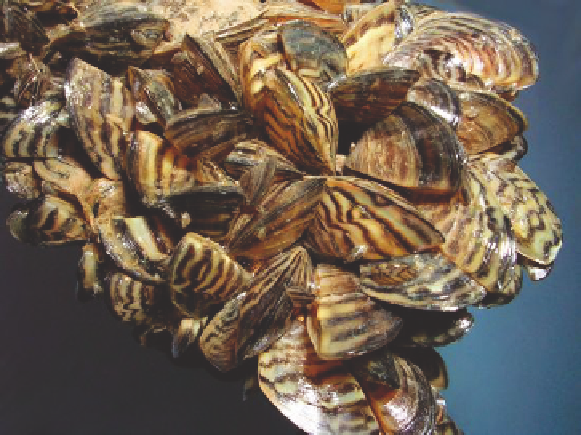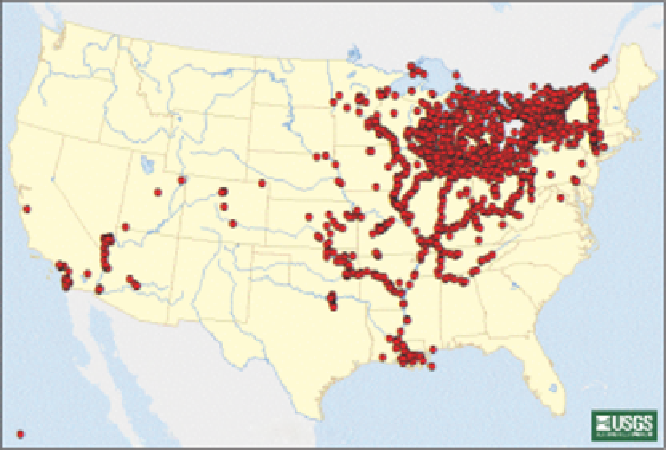Environmental Engineering Reference
In-Depth Information
FIGURE 15.28
Zebra mussels. (From USGS.)
Zebra/Quagga mussel location
FIGURE 15.29
Zebra mussel distribution as of 2010. (From Benson, A.J., Zebra mussel sightings distribu-
tion, 2011, Retrieved 2/12/2012 from http://nas.er.usgs.gov/taxgroup/mollusks/zebramussel/zebramusseldis-
tribution.aspx.)
One consequence of the incredible densities of the ilter-feeding zebra mussels results from the
quantity of water iltered (up to 1 gal. of water per day per mussel) and their highly eficient iltration
mechanism. As a result, they remove a large fraction of the particulate materials from the water col-
umn (retaining nearly 100% of particles >1 μm; Jorgensen et al. 1984; Fanslow et al. 1995) reducing
food supplies for other organisms.
A second consequence of their incredible densities is biofouling. Instead of burrowing into
sands or silts like many other mussels, zebra mussels attach to a hard surface, any hard surface
(rocks, logs, plants, other mussels, plastic, concrete, etc.). They can often clog water supply intakes


Search WWH ::

Custom Search